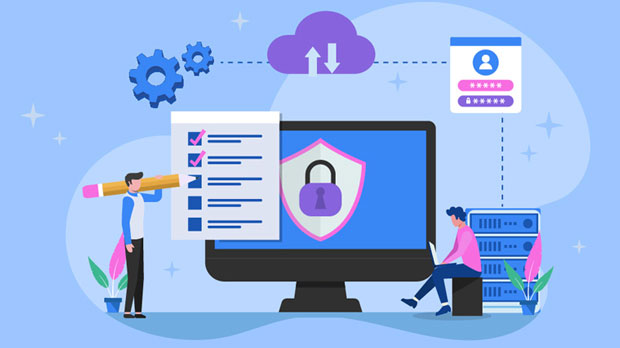When considering the purchase of a socks5 proxy, the price can vary widely depending on various factors, such as service quality, provider reputation, geographical location, and additional features. In this article, we will break down the typical cost of sock s5 proxies, analyze the factors affecting pricing, and explore how to identify the most cost-effective service that meets your needs. Whether you are looking for a proxy for personal use, business operations, or cybersecurity purposes, understanding the cost and value proposition of these services is crucial for making an informed choice. What is SOCKS5 Proxy and Why Does Its Price Matter?SOCKS5 is an advanced internet protocol that functions as a proxy server to route internet traffic through a third-party server. Unlike HTTP proxies, which only work with web browsers, SOCKS5 proxies support all types of internet traffic, including web browsing, torrenting, gaming, and more. SOCKS5 proxies are generally considered more secure, faster, and more versatile, as they do not modify your data packets and offer support for a wider range of applications.Understanding the price of SOCKS5 proxies is essential for users who need a balance between affordability and high-quality service. With the growing demand for online anonymity and bypassing geographical restrictions, choosing the right proxy service can have significant implications for privacy, speed, and overall online experience. Therefore, evaluating the cost of SOCKS5 proxies against the features and benefits they offer is key to ensuring the best value.Factors That Affect the Price of SOCKS5 ProxiesSeveral factors influence the cost of SOCKS5 proxy services, and understanding these can help you assess whether a particular provider offers good value. Here are the main factors to consider:1. Provider Reputation and ExperienceThe reputation of the proxy provider plays a major role in its pricing. Established providers with a strong track record of delivering high-quality service, reliable performance, and excellent customer support generally charge higher fees. Newer providers may offer lower prices, but their services may come with risks, such as potential security vulnerabilities, less reliable connections, or limited customer support. Reputation often translates into reliability and trust, and you should consider whether the additional cost of a reputed provider is justified.2. Location of the Proxy ServersThe geographical location of the proxy servers can also impact the price. Servers located in high-demand regions, such as the United States, Western Europe, or major financial hubs, tend to be more expensive. Conversely, servers in less popular locations, such as Eastern Europe or Southeast Asia, may be more affordable. However, if you need proxies for specific tasks, such as accessing local content from a particular country, choosing servers based on their locations may be more important than price alone.3. Bandwidth and SpeedThe bandwidth and speed provided by SOCKS5 proxies are crucial for their effectiveness. Some providers offer unlimited bandwidth, while others may impose data caps or limit speeds to lower costs. Proxies with high-speed connections, low latency, and large bandwidth allowances typically come at a higher price. If you intend to use SOCKS5 proxies for data-intensive tasks such as video streaming or large-scale web scraping, you should prioritize speed and bandwidth, even if it means paying a premium.4. Additional FeaturesThe features included with your SOCKS5 proxy subscription can also affect the overall price. Some providers offer advanced features such as IP rotation, encryption, or dedicated IPs, which can increase the cost. IP rotation is particularly important for users engaged in activities that require frequent changes of IP addresses, such as web scraping or avoiding IP bans. Additionally, encrypted SOCKS5 proxies offer extra security, which might justify a higher price for users concerned with online privacy.5. Subscription LengthPricing can also vary depending on the subscription length. Short-term plans, such as monthly subscriptions, tend to be more expensive per month, while longer-term commitments, such as annual or multi-year plans, often come with discounts. Choosing the right subscription length depends on your needs and budget. For casual users, a monthly plan might be sufficient, while businesses or frequent users may benefit from long-term subscriptions that offer more cost-effective pricing.What is the Typical Cost of SOCKS5 Proxies?The price of SOCKS5 proxies can range from as low as $1 to $5 per month for basic shared proxies to as high as $50 to $100 per month for dedicated, high-performance proxies. Here's a breakdown of the typical pricing for different types of SOCKS5 proxies:1. Shared SOCKS5 ProxiesShared SOCKS5 proxies are typically the most affordable option, with prices ranging from $1 to $5 per month. These proxies are shared with multiple users, which may impact their speed and reliability. While they are sufficient for casual browsing or light tasks, shared proxies may not be suitable for high-demand activities, such as gaming or streaming.2. Dedicated SOCKS5 ProxiesDedicated SOCKS5 proxies are designed for individual use, meaning that you are the sole user of the proxy server. These proxies offer better performance, speed, and security, with prices generally ranging from $5 to $20 per month. Dedicated proxies are ideal for users who require consistent performance and reliability for more demanding tasks.3. High-Performance or Elite SOCKS5 ProxiesFor users who need the best possible performance, such as for large-scale data scraping or accessing geo-restricted content, high-performance SOCKS5 proxies are available. These proxies are typically priced between $20 and $100 per month, depending on the features, bandwidth, and server location. High-performance proxies come with fast speeds, high reliability, and added features like IP rotation and encryption.How to Find the Best Value SOCKS5 Proxy ServiceFinding the best value SOCKS5 proxy service involves more than just selecting the cheapest option. It's important to consider the overall balance between price, performance, and the specific features that you need. Here are some tips for finding the best value:1. Assess Your NeedsBefore shopping around for SOCKS5 proxies, take some time to assess your needs. Are you looking for proxies for browsing, gaming, or business-related tasks? Do you need high speed, security, or anonymity? Understanding your needs will help you narrow down providers that offer services that align with your requirements.2. Compare ProvidersCompare multiple proxy providers to assess their pricing, features, and reputation. Look for reviews and testimonials from other users to get a sense of the quality and reliability of the service. Don't just focus on price—take into account the value of features, such as unlimited bandwidth, fast speeds, and customer support.3. Test the ServiceMany providers offer trial periods or money-back guarantees, allowing you to test the service before making a long-term commitment. Use this opportunity to assess the speed, reliability, and overall performance of the proxies. Make sure they meet your expectations for speed and performance before purchasing.4. Consider Long-Term ValueRather than focusing solely on the initial cost, consider the long-term value of the service. A slightly higher-priced proxy service with better performance, security, and customer support may be more cost-effective in the long run than a cheap option that provides poor performance and limited features.The cost of SOCKS5 proxies can vary greatly depending on the provider, the type of proxy, and the features included. To find the best value, it's essential to assess your needs, compare providers, and consider factors such as speed, security, and additional features. By carefully considering these aspects, you can find a SOCKS5 proxy service that offers the right balance of affordability and performance to meet your needs.
Mar 20, 2025
![arrow]()




























































